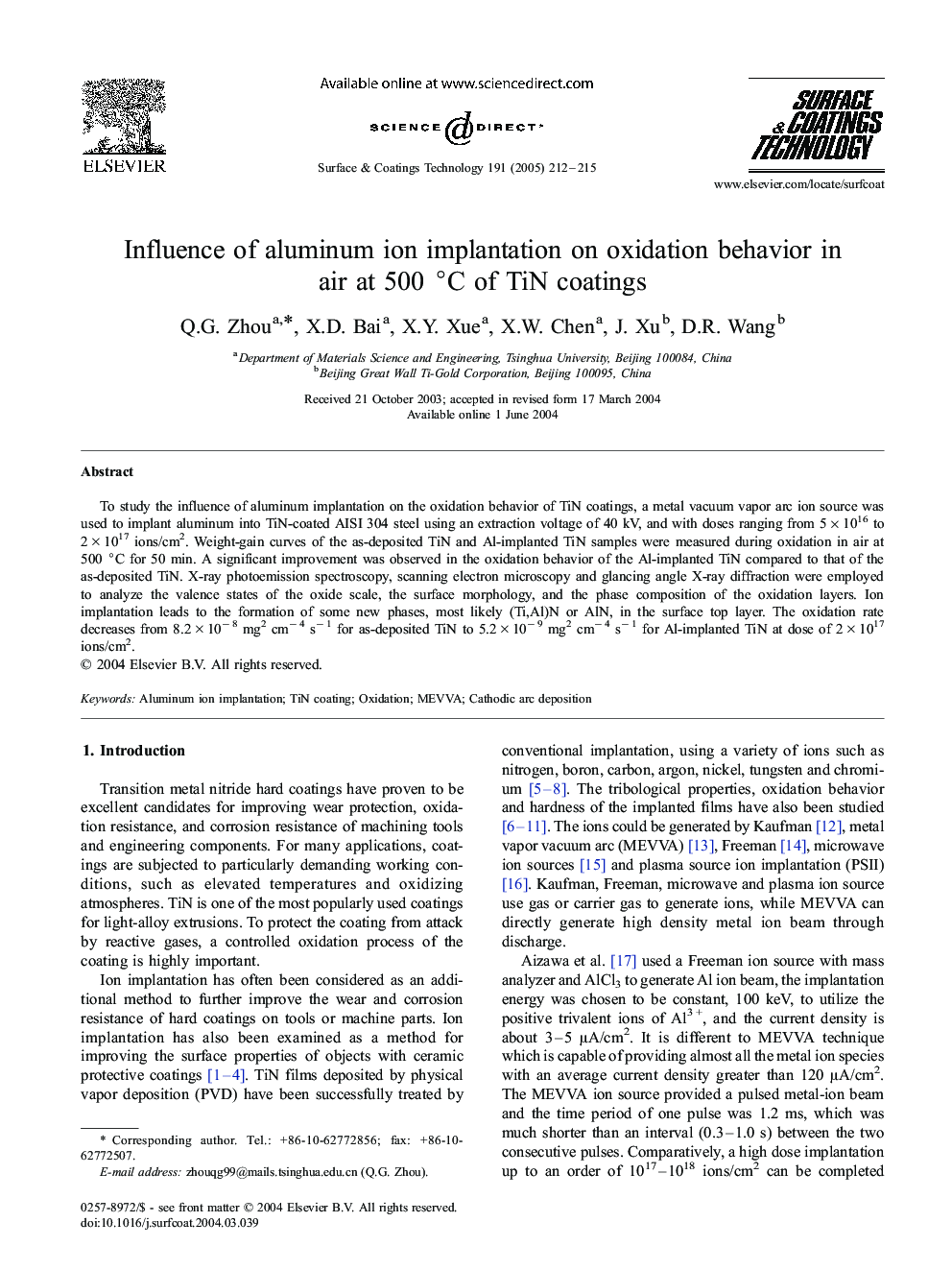| Article ID | Journal | Published Year | Pages | File Type |
|---|---|---|---|---|
| 9809916 | Surface and Coatings Technology | 2005 | 4 Pages |
Abstract
To study the influence of aluminum implantation on the oxidation behavior of TiN coatings, a metal vacuum vapor arc ion source was used to implant aluminum into TiN-coated AISI 304 steel using an extraction voltage of 40 kV, and with doses ranging from 5Ã1016 to 2Ã1017 ions/cm2. Weight-gain curves of the as-deposited TiN and Al-implanted TiN samples were measured during oxidation in air at 500 °C for 50 min. A significant improvement was observed in the oxidation behavior of the Al-implanted TiN compared to that of the as-deposited TiN. X-ray photoemission spectroscopy, scanning electron microscopy and glancing angle X-ray diffraction were employed to analyze the valence states of the oxide scale, the surface morphology, and the phase composition of the oxidation layers. Ion implantation leads to the formation of some new phases, most likely (Ti,Al)N or AlN, in the surface top layer. The oxidation rate decreases from 8.2Ã10â8 mg2 cmâ4 sâ1 for as-deposited TiN to 5.2Ã10â9 mg2 cmâ4 sâ1 for Al-implanted TiN at dose of 2Ã1017 ions/cm2.
Related Topics
Physical Sciences and Engineering
Materials Science
Nanotechnology
Authors
Q.G. Zhou, X.D. Bai, X.Y. Xue, X.W. Chen, J. Xu, D.R. Wang,
